
What does Blue Green Mean in a Dream?
Have you ever found yourself captivated by the soothing hues where blue meets green – in the shimmering scales of a fish, the iridescent feathers of a peacock, or the tranquil waters of a mountain lake? This mesmerizing color, occupying the liminal space between cool and warm, water and earth, sky and sea, seems to hold a key to unlocking profound states of emotional healing, balance and wholeness.
In this deep dive article, we’ll explore the multifaceted significance of blue-green through the lenses of neuroscience, psychology, spirituality and the creative arts. We’ll look at how exposure to blue-green light affects brain function and emotional regulation, how this color shows up in the symbolic language of the psyche, and how working with blue-green energy in therapeutic and personal growth contexts can support the integration of dissociated parts and the emergence of the authentic Self.
Whether you’re a psychotherapist interested in using color as a tool for healing, or an individual seeker looking to harness the wisdom of blue-green for your own journey of self-discovery, this article will provide a wealth of insights and practical guidance. So let’s take a refreshing plunge into the blue-green waters of the soul, and see what treasures await us in the depths.
The Meaning of Blue-Green in Dreams
Dreams featuring blue-green often indicate a period of emotional healing, personal growth, or a need for deeper self-reflection. This color in a dream suggests a balance between introspection and outward expression, urging the dreamer to find harmony between their inner world and their interactions with others.
If blue-green appears in a dream as a dominant color in the landscape—such as in water, sky, or vegetation—it may symbolize renewal, inner peace, or a deepening connection to one’s emotions. The presence of this color in moving water, for example, can indicate emotional clarity and flow, while stagnant blue-green water might suggest unresolved emotions or a need to address emotional stagnation.
In Jungian dream analysis, blue-green could represent the integration of thought and feeling, particularly in the realm of self-expression. It may reflect the dreamer’s need to communicate more authentically or to find a greater sense of balance between logic and intuition. If the dreamer is going through a period of emotional healing, blue-green may symbolize progress toward wholeness, encouraging trust in the healing process.
Overall, blue-green in dreams serves as a sign of renewal, urging the dreamer to embrace emotional fluidity, trust in the body’s ability to heal, and seek a greater sense of harmony within their life.
Somatic Associations with Blue-Green
Blue-green is a color that exists at the intersection of calm and renewal, integrating the grounding stability of blue with the rejuvenating qualities of green. Somatically, this color is linked to the parasympathetic nervous system, encouraging relaxation, deep breathing, and a sense of balance within the body. Unlike red or orange, which activate the body’s mobilization responses, blue-green fosters a state of restoration, making it deeply connected to healing, emotional regulation, and the body’s natural rhythms.
Physiologically, blue-green is associated with the lungs, heart, and throat, aligning with both the heart and throat chakras in energy healing traditions. It encourages clear communication, emotional openness, and the ability to process feelings with a sense of ease rather than urgency. In somatic therapy, blue-green is often linked to states of fluidity and adaptability, helping individuals transition out of stress responses and into a more regulated, present state.
This color is also tied to the body’s capacity for renewal. It supports cellular regeneration, immune function, and recovery from stress. When someone is experiencing trauma healing, blue-green represents the shift from hypervigilance to trust, allowing the body to move from survival mode into a space of safety and connection.
The Neurobiology of Blue-Green
One of the most fascinating areas of research in recent years has been the study of how different colors of light influence the brain and nervous system. Far from being just a visual stimulus, the photons of colored light seem to have direct and measurable effects on neural activity, hormonal balance and physiological processes.
In the case of blue-green light (roughly in the 490-520 nm wavelength range), studies have found that exposure to this color activates a distributed network of brain regions involved in emotional regulation, stress responses, social bonding and reward processing. Let’s take a closer look at some of the key players in this blue-green neural symphony:
Bringing emotions into balance via the limbic system
At the heart of the blue-green network is a set of ancient brain structures known as the limbic system, which evolved to mediate survival functions like fight-or-flight, but also serves as the seat of emotional processing, memory formation and attachment bonding.
One of the key limbic hubs affected by blue-green light is the paraventricular nucleus (PVN) of the hypothalamus. The PVN is like a master control center that integrates sensory input, cognitive appraisals and physiological feedback to regulate the body’s stress responses and maintain homeostasis. It’s also a major site of synthesis for neuropeptides like oxytocin and vasopressin, sometimes called the “love and bonding hormones” for their roles in promoting emotional attunement, empathy and prosocial behavior.
Neuroimaging studies have found that blue-green light seems to have a balancing and optimizing effect on the PVN and its connected structures like the amygdala (the brain’s “smoke alarm” for threats) and the nucleus accumbens (the “pleasure center” that registers rewards). On the one hand, blue-green appears to reduce excess activity in the amygdala, which may help calm the nervous system and downregulate chronic stress and anxiety. On the other hand, it enhances positive emotion and motivation by boosting activity in the nucleus accumbens, which may lift mood and alleviate symptoms of depression.
So one way to think about blue-green is as an emotional regulator – it helps smooth out the peaks and valleys of limbic reactivity, creating a greater sense of internal stability, adaptability and coherence. If you imagine the psyche as a dynamic interplay of opposing forces, blue-green seems to occupy the “Goldilocks zone” of not too much, not too little, just right. It invites us to befriend and inhabit the full spectrum of feeling, without getting hijacked by any one extreme.
Restoring safety and connection via the vagus nerve
Another key player in the blue-green network is the dorsal vagal complex (DVC), a cluster of brainstem nuclei that serves as the main control center for the parasympathetic nervous system. The DVC is like the brain’s “rest and digest” switch – when activated, it sends signals via the vagus nerve to slow heart rate, lower blood pressure, and promote feelings of calm, safety and social engagement.
Exposure to blue-green light has been found to increase activity in the DVC, which makes sense given this color’s traditional associations with peace, tranquility and emotional balance. By stimulating the vagus nerve, blue-green may help shift the nervous system out of fight-or-flight overdrive and into a state of relaxed, receptive presence.
This has important implications for mental health, as chronic stress and unresolved trauma often involve an overactive sympathetic nervous system and an underactive vagal brake. Many therapeutic approaches, from EMDR to neurofeedback to polyvagal-informed therapy, aim to strengthen vagal tone as a foundation for emotional resilience and healthy attachment. By incorporating blue-green light or visualization into these modalities, we may be able to accelerate the process of physiological and relational healing.
Interestingly, the vagus nerve also interfaces with other blue-green-associated functions like vocalizing, swallowing and breathing. Think of how a deep belly breath or a soothing vocal tone can instantly shift your state from agitation to ease, or how a loving gaze or affectionate touch can make you feel seen, safe and soothed. By regulating these visceral rhythms, blue-green light may help harmonize mind and body, self and other, inner and outer worlds.
Integrating brain and body via the thalamus
At an even deeper level, blue-green light seems to enhance the integrative capacities of the thalamus, a central hub that relays sensory information between different brain regions. Often called the “switchboard” of the brain, the thalamus filters and prioritizes incoming signals before sending them on to the cortex for higher processing. It also has rich feedback loops with the limbic system and prefrontal cortex, allowing for top-down regulation of emotion and bottom-up sensing of the internal milieu.
Some researchers have proposed that the thalamus may be the seat of consciousness itself – the place where the disparate strands of perception, cognition and emotion are woven into a unified field of awareness. When the thalamic circuitry is functioning optimally, we experience a sense of presence, clarity and coherence – a feeling of being at home in our skin and attuned to our surroundings.
But when the thalamus is impaired, as often happens with trauma, stress or sensory overload, we may feel fragmented, dissociated or “out of sync”. Information gets stuck in loops or isolated compartments, unable to flow freely between parts of the brain that need to communicate. This can manifest as flashbacks, somatic distress, emotional dysregulation, cognitive confusion or distortions in self-perception.
Fascinating research using fMRI has found that exposure to blue-green light seems to enhance thalamic connectivity and facilitate the integration of neural networks involved in perception, emotion, cognition and somatic awareness. By opening up communication between these often-dissociated domains, blue-green may help us feel more embodied, empowered and whole – able to process challenging experiences and emerge with newfound wisdom and resilience.
So whether we’re working with attachment wounds, sensory integration issues, dissociative symptoms or somatic blocks, blue-green light may be a valuable tool for restoring thalamic function and promoting the flexible, adaptive state of presence that underlies health and well-being. Of course, as with any therapeutic intervention, the key is to titrate the dosage and timing of blue-green exposure to match the nervous system’s capacity to integrate and self-regulate. Too much too fast can be overwhelming; but with skillful guidance and an attuned relational field, blue-green may indeed light the way to new depths of healing.
The Symbolism of Blue-Green
So far we’ve explored some of the neurological correlates of blue-green – the brain structures and pathways that seem to mediate this color’s effects on emotion, arousal, attachment and integration. But what about the subjective experience of blue-green? What does this color feel like in the body, evoke in the imagination, or symbolize in the depths of the psyche?
To answer these questions, we need to dive into the waters of the unconscious and explore the archetypal meanings of blue-green across cultures, dreamscapes and creative expressions. By amplifying the personal and collective associations with this color, we can tap into its transformative potential as a catalyst for growth, healing and self-discovery.
Blue-green as a bridge between worlds
One of the most striking qualities of blue-green is its liminal or “in-between” nature. In the color spectrum, blue-green occupies the space between the cool, calming energy of blue and the warm, enlivening energy of green. In the natural world, blue-green is found in transitional spaces like the surface of water, the canopy of trees, or the iridescent shimmer of certain minerals and living forms.
This ambiguity or multivalence gives blue-green a “mercurial” character – an ability to shapeshift, reflect and transmute across contexts. In many shamanic and esoteric traditions, blue-green is associated with the archetype of the Messenger or Mediator – a figure who can move between realms, communicate with different beings, and bridge the apparent dualities of existence.
Think of the Greek god Hermes, with his winged sandals and caduceus staff, traversing the boundaries between Olympus, Earth and the Underworld. Or the archangel Raphael, whose name means “God heals”, and who is often depicted with blue-green wings that uplift and protect. Or the Aztec deity Quetzalcoatl, the feathered serpent who embodies the union of heaven and earth, light and shadow, spirit and matter.
In Jungian terms, we could say that blue-green represents the transcendent function – the psyche’s innate capacity to reconcile opposites, integrate the unconscious, and birth the new. Just as the blue-green cyanobacteria were among the first organisms to produce oxygen and make life on earth possible, the blue-green energy within us may be the evolutionary spark that opens new pathways of creativity, healing and transformation.
Blue-green as the alchemy of the heart
Interestingly, many traditions link blue-green with the heart center – the “emerald of the wise” sought by alchemists, the anahata chakra of Tantra, the healing nectar in the Grail legends, or the radiant jade stone in Taoist internal alchemy. Far more than just a sentimental symbol, the awakened heart is seen as an organ of spiritual perception – a portal into non-dual awareness, unconditional love and the interconnected web of life.
When our hearts are armored by fear, grief or trauma, we may experience the world through a lens of separateness, scarcity and threat. We get stuck in cycles of grasping and aversion, attraction and repulsion, eternally seeking safety and fulfillment outside ourselves. But when we learn to attune to the wisdom of the heart, to feel its openness, warmth and tender strength, we begin to sense the underlying unity and sacredness of all things.
The journey through blue-green invites us to undergo this alchemy of the heart – to face and integrate the wounded, exiled or dissociated parts of ourselves, and emerge into a more inclusive, compassionate and authentic way of being. Blue-green can be a portal into what Jungians call the Self – the transpersonal center of the psyche that holds all the complexity of the personality in a state of dynamic wholeness.
If we imagine the Self as a vibrant, fractal jewel, blue-green would be the “secret fire” or “sacred medicine” that catalyzes its transformation from fragmented coal to luminous diamond. By embracing the full spectrum of our emotions, sensations and needs – the light and the dark, the hurt and the hope, the loneliness and the longing – we alchemize the lead of our conditioning into the gold of our unique essence.
Blue-green as emotional flow and integrity
At the core of this transformation is the element of water. Not the churning, crashing waves of unbridled feeling nor the still, stagnant waters of suppression, but the calm, clear stream of emotional intelligence and fluidity. Blue-green signals a quality of relaxed, responsive presence – an ability to be with our inner experience without distortion, dissociation or denial.
When we’re in the blue-green zone, we’re able to honor and express our true feelings, needs and boundaries while also attuning to those of others. We communicate with clarity, confidence and care, but without rigidity or reactivity. We can ride the ebb and flow of our inner tides without losing touch with our center, purpose or values.
The journey through blue-green is thus one of coming home to our authentic voice – learning to speak and live our truth with congruence, openness and respect. Instead of being ruled by internalized “shoulds”, external expectations or unconscious fears, we attune to the deeper intelligence of the heart-mind-body. Thoughts, words and actions become integrated into a seamless expression of our essential Self.
In the words of Sufi mystic Rumi: “Speak a new language so that the world will be a new world.” Blue-green reminds us that our most impactful act of creation is to embody and emanate the change we wish to see. As we heal the split within ourselves, we become catalysts for healing the fragmentation in our world.
The Shadow of Blue-Green
Of course, the path of emotional healing and integration is rarely a linear or unidirectional process. The psyche contains infinite shades and hues, and even the most vibrant colors cast shadows of their own. In the case of blue-green, the shadow may manifest as a tendency towards emotional aloofness, detachment or dissociation – a fear of feeling too much, needing too much, or being too vulnerable.
The soothing, calming effects of blue-green can sometimes be used as a kind of spiritual bypass – a way to transcend or escape the messy, earthly realm of embodied emotion and relationship. We may become overly identified with the archetype of the Wise One or Mystic, using our “higher” insights to avoid dealing with unresolved wounds, needs or conflicts.
Alternatively, we may get stuck in the “muck” of blue-green – the swampy, stagnant waters of emotional confusion, overwhelm or inertia. The fluidity of this color can turn into a lack of boundaries, clarity or direction – an inability to take decisive action or honor our own agency. We may fall into codependent patterns of overgiving or overaccommodating, losing ourselves in the needs or wishes of others.
The key to navigating these shadow potentials is to remember that blue-green is fundamentally about integration and wholeness. It’s not about bypassing or suppressing any part of our experience, but learning to hold it all with mindful acceptance and compassion. Like the lotus that grows from the depths of the muddy pond, our most radiant Self often emerges from the very places we once feared to tread.
By facing our shadows with courage, grit and heart, we gradually develop the emotional literacy to decode their hidden messages. We mine the darkness for the gold of insight and lay claim to our own innate wisdom. We learn to discern the subtle flavors of our inner world, honor the intelligence of difficult emotions, and respond to our deeper needs with attunement, action and grace.
Blue-Green in the Expressive Arts
While the language of the psyche is often symbolic and imaginal, there are times when words fall short of capturing the ineffable textures of the inner world. This is where the expressive arts can offer a potent pathway into emotional healing, insight and integration. By tapping into the nonverbal dimensions of color, form, sound and movement, we open up new possibilities for exploring and transforming the psyche.
Let’s look at a few examples of how blue-green shows up in the arts, and how it communicates the archetypal themes we’ve been discussing:
-
Blue-green in painting and fine art:
The mid-19th century French Impressionist Claude Monet was known for his luminous, subtle use of color, and blue-green was a frequent motif in his dreamy, evocative landscapes. In works like “Reflections of Clouds on the Water-Lily Pond” or “The Thames below Westminster”, Monet captures the ever-shifting interplay of light and water, surface and depth, stillness and flow. His blue-green palette seems to dissolve the boundaries between earth and sky, inviting the viewer into a liminal space of reverie and reflection.
In a very different style, the early 20th century Austrian painter Gustav Klimt used blue-green to striking effect in his ornate, symbol-rich portraits and allegories. Works like “The Kiss”, “Danae” or “The Virgin” feature intricate patterns of blue-green that seem to shimmer and undulate across the picture plane, evoking a sense of mystery, sensuality and transcendence. Klimt’s blue-green is often paired with gold and other jewel tones, suggesting the alchemical transformation of earthly elements into sacred radiance.
-
Blue-green in film and cinematography:
In his dreamlike, melancholic films, Russian director Andrei Tarkovsky often used a blue-green palette to evoke the surreal landscapes of memory and the oceanic nature of the unconscious.
Blue-Green in Dreams: Shadow and Golden Shadow
In the symbolic language of dreams, blue-green can represent both the shadow and golden shadow aspects of the psyche. The shadow, in Jungian terms, refers to the repressed, denied or unconscious parts of ourselves that we have split off or rejected as unacceptable. These may be qualities we deem too vulnerable, too aggressive, too needy or too selfish to own – the “unallowed” emotions and impulses that get buried in the depths.
When blue-green shows up in dreams as a shadow element, it may point to areas where we have lost touch with our authentic feelings and needs. Perhaps we have learned to suppress our true voice in order to please others or fit in. Maybe we have numbed out of painful emotions like grief, anger or shame, leaving us feeling flat and disconnected. The shadow of blue-green can manifest as a sense of emotional deadness, apathy or dissociation – a difficulty accessing or expressing the vibrant truth of our inner world.
In such dreams, blue-green imagery may take on a murky, stagnant or polluted quality. We might find ourselves underwater in a dark, silty lake, struggling to breathe or see clearly. We may encounter sickly, poisonous creatures or plants, or feel trapped in a claustrophobic, airless space. These dreams invite us to acknowledge and reclaim the split-off parts of ourselves, to dive into the depths and retrieve the pearls of insight and healing.
Conversely, when blue-green appears as a golden shadow, it represents the emergent, life-giving potential buried in the muck. The golden shadow refers to the positive, creative qualities we have disowned or devalued, often because they seemed too grand, too powerful or too radiant for our current self-image. These may be aspirational traits like confidence, exuberance, sensuality or spiritual wisdom – the “too much” energies that we have toned down to avoid risking failure or exposure.
In golden shadow dreams, blue-green takes on a luminous, nourishing and regenerative character. We might see lush underwater gardens, bioluminescent coral reefs or shimmering schools of tropical fish. We may be bathed in an ethereal turquoise light, or drink from a chalice of vivid blue-green nectar. These dreams invite us to stretch into the fullness of our being, to embrace the beauty, abundance and innate intelligence of our emotional and relational lives.
To work with the shadow and golden shadow of blue-green in dreams, we can start by bringing an attitude of compassionate curiosity to the images and felt senses they evoke. Instead of dissecting them cognitively, we allow ourselves to gently explore their textures, temperatures and resonances in the body. We might use expressive arts like painting, poetry or movement to amplify and embody their messages, letting them guide us into new worlds of expression.
As we welcome the blue-green energy in all its forms – the dark and the light, the dense and the diffuse, the stagnant and the flowing – we midwife the birth of the authentic Self. We learn to meet our emotions and needs directly, without distortion or defense. We discover the wisdom in our woundedness, the hidden blessings in our burdens, and the creative potential of our conflicts and longings. The integration of blue-green energy, in its shadow and golden hues, catalyzes the profound transformation Jung called individuation: the lifelong journey of becoming wholly and uniquely ourselves.
Color Psychology
Psychology of Red-Orange
Psychology of Orange

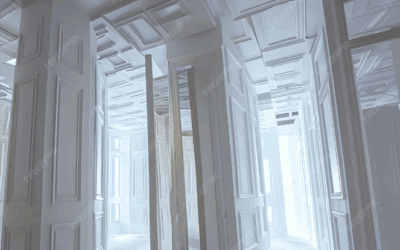
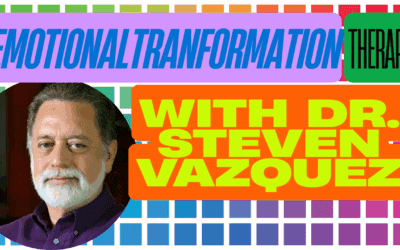


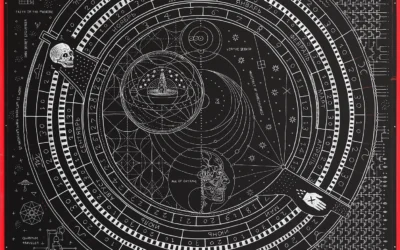

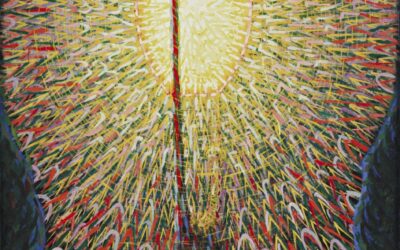

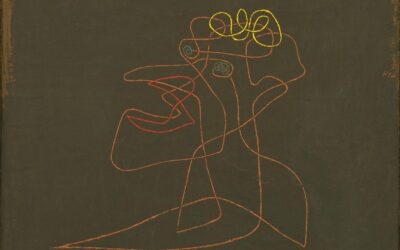
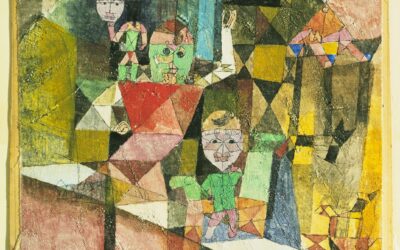

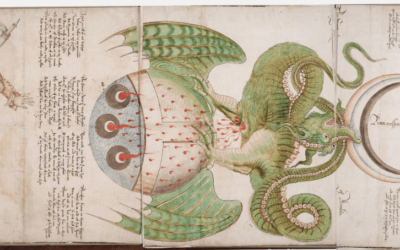
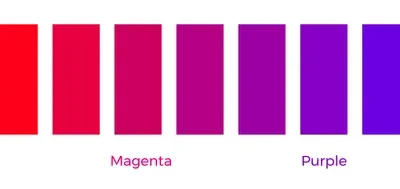
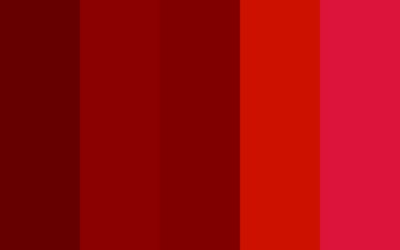
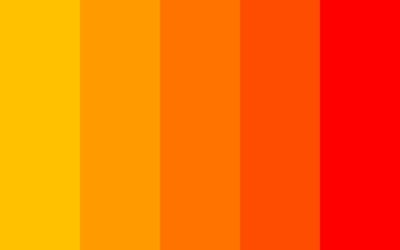
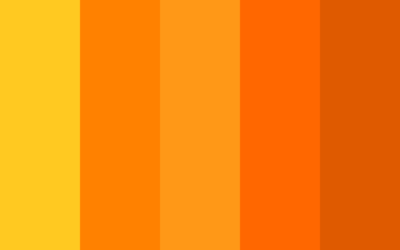
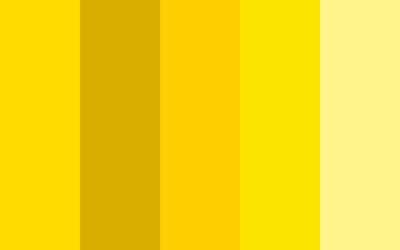
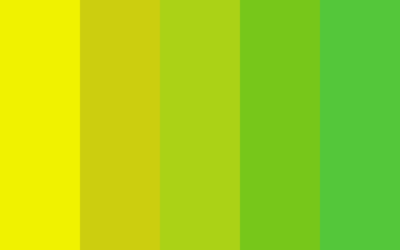


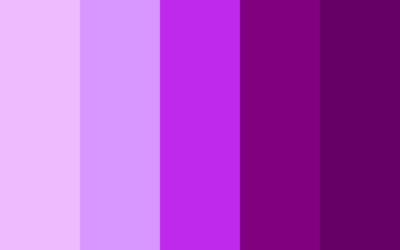
0 Comments